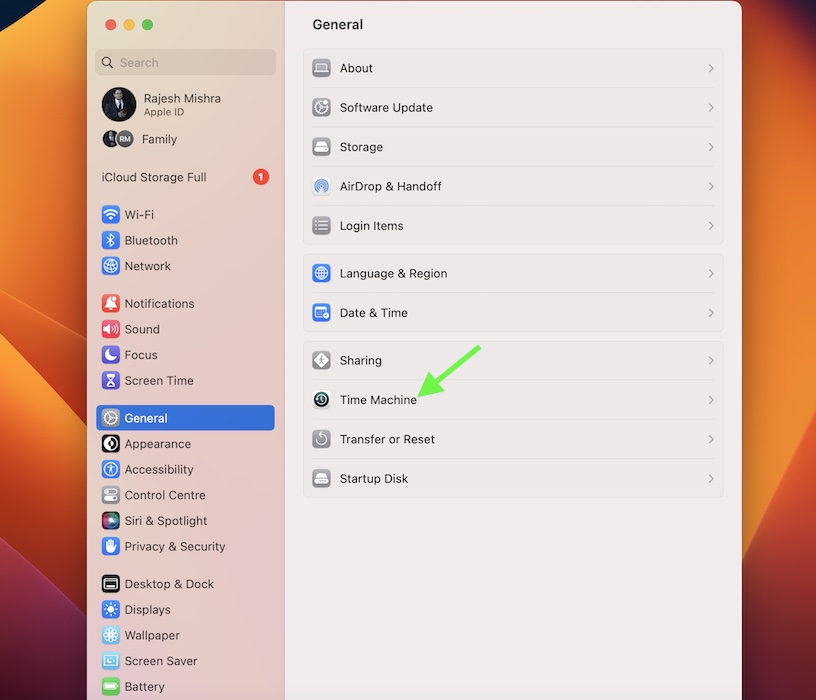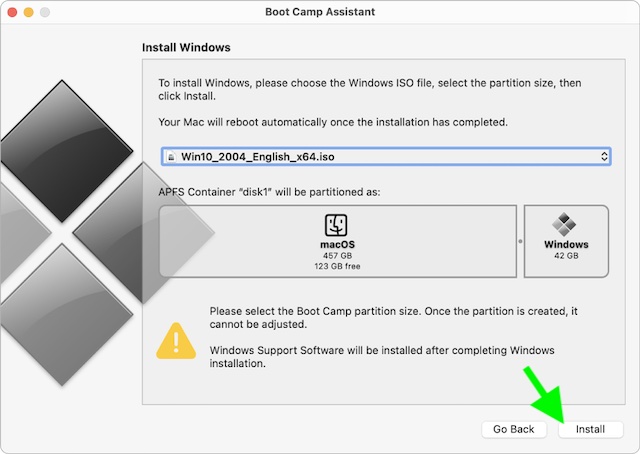Step By Step Guide to Installing Windows 10/11 on Mac with Boot Camp
To begin with, let’s first check out how the installation of Windows on macOS works and also tick off the essential requirements so that you won’t run into any unexpected obstruction later.
So, How Do You Install Windows on Mac?
While there are multiple ways to get Windows on Mac, using Boot Camp is one of the best ways. Aside from being a highly efficient windows installer, it is also very secure. That’s the reason why both tech nerds and newbies take this route to test Windows on Apple’s computers. Hence, you can count on it to let you enjoy using Windows on your macOS device without any hassle. So long as you have a Mac with a sufficient amount of storage, you will be able to sail through.
What are the Requirements for Installing Windows on Mac?
To get going, make sure to check off the important requirements for getting Windows 11 on Mac.
Do note that you will need a full installation, a 64-bit version of Windows on a disk image (ISO file), or other installation media. Besides, you will also need to download a Windows 10 Disc Image (ISO File) from Microsoft.
Important Things to Do Before Getting Started
To get started on the right note, make sure you back up all the essential files. If something goes wrong during the process, you will have the latest backup to restore the lost files.
As always, you can use Time Machine to back up your files on your Mac. To do so, head into the System Settings app on your Mac -> General -> Time Machine to back up your Mac.
And if your Mac is not updated, make sure to update it without fail. To get it done, head over to the System Settings app on your Mac -> General -> Software Update. After that, download and install the latest iteration of macOS as usual.
If you want to install Windows on your Mac, connect the notebook to a power source during the whole process.
Ways to Prepare Your Mac for Windows 11
Note that Boot Camp Assistant lets you prepare your Mac by making a new partition for Windows named BOOTCAMP and also downloading the Boot Camp support software.
- On your Mac, launch Boot Camp Assistant which is inside the Applications -> Utilities. Alternately, bring up the Spotlight Search -> type in Boot Camp and open it.
- At the Introduction screen, hit Continue. Now, it will check your system for the total available disk space.
- Be warned that it will get rid of older Time Machine snapshots and cached iCloud files to recover enough space for Boot Camp. Hence, the process will take some time to complete. But bother not, you can always click on the Stop button to skip this process.
- Just in case you have only one internal disk, select the Windows ISO image. After that, be sure to specify the partition size by dragging the divider that shows between the macOS and Windows partitions. Then, hit Install to proceed. Pro Tip:
Keep in mind that you won’t be able to resize the partition later. For the folks who have multiple internal disks, I would suggest they go through the onscreen instructions to choose and format the disk that they want to install Windows on. After that, select the Windows ISO image.
- If you choose your startup disk, you will get an option to make an additional partition for Windows. Then after, be sure to specify the partition size by dragging the divider that appears between the macOS and Windows partitions.
- And if you choose an APFS-formatted disk, you will be able to either make an additional partition on the disk for Windows or wipe out the entire disk and then make a partition for Windows.
- Again, if you decide to make an additional partition, make sure to specify the partition size by dragging the divider that appears between the macOS and Windows partitions.
- It’s important to point out that if you choose a non-APFS-formatted disk, you will have the option to erase the entire disk and make a partition for Windows. Another thing you need to know is that if Boot Camp is already present on the disk you select, you will have the option to uninstall it.
- Note that macOS won’t allow you to resize the partition later. Once this step is complete, the Windows installer will automatically start.
Install and Set Up Windows on Mac
Once the installation is complete, your Mac will automatically restart using Windows. After that, go through the instructions to set up Windows on your Mac.
Install Boot Camp on Windows
Once you have successfully installed Windows, the Boot Camp drivers that support your Mac hardware will begin to install.
Head over to the Boot Camp installer in Windows, and go through the onscreen instructions to install Boot Camp. Make sure not to click on the Cancel button in any of the installer dialogs. If you see any message saying that the software you are installing has not passed Windows Logo testing, be sure to click on Continue Anyway to proceed. Another thing that I would recommend you do is to avoid responding to installer dialogs that show only briefly during the installation process. However, if you get a prompt asking you to install the device software, make sure to click on Install. But just in case nothing seems to be happening, check out if there is a hidden window that needs to respond. Also, be sure to look behind open windows to find out if there is a hidden window.
When the installation is over, click on Finish. Now, your Mac will restart. Once the computer has rebooted, follow the given instructions to complete the process.
Enjoy Using Windows on Your Mac…
There you go! Now that you have successfully installed Windows on your Mac, it’s time to explore all the cool features and also customize the OS to your heart’s liking. Whether you are a pro or a normal Joe, you may not have faced any issues during installation. It would be great to have your thoughts in the comments section below.


